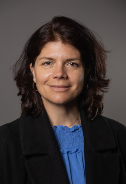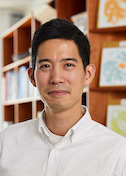Brush with Fame
Yizhi Jane Tao
Rice University
Published June 14, 2013
In 2006, Yizhi Jane Tao accepted an award for being one of the most influential Chinese at her undergraduate alma mater, Peking University. Other awardees included Oscar-winning director Ang Lee and actress Zhang Ziyi, who starred in Crouching Tiger, Hidden Dragon.
"It was good to see that our work is appreciated," says Tao, associate professor in biochemistry and cell biology at Rice University. "But it made me realize that fame is not important to me. I like my work better."
Tao studies viruses, specifically RNA viruses. She got her start working with bacteriophages in graduate school at Purdue University in the lab of Michael Rossmann, one of the first labs to solve a 3-D viral structure. After graduate school, she trained with Stephen Harrison at Harvard Medical School, another pioneer in solving virus structures.
Viruses are not only different from other organisms, but also from one another. "Viruses are small but very clever," says Tao. "They can adapt to many hosts and environments."
Her first major discovery, in 2006, identified a loop in the nucleoprotein of the H1N1 human influenza virus. Every negative-sense RNA virus encodes a nucleoprotein that surrounds the virus genome and allows it to replicate. In this case, Tao found that the protein has a distinctive loop that is essential for self-oligomerization and encapsidation of the viral genome into a double-helical hairpin structure.
The road to that discovery was fraught with trial and error, both in Tao's labs and those of others who had tried to solve this structure. The protein was hard to nail down because it tends to form different sized oligomers. "It's not homogeneous," she says.
Finally her lab found a strain of the virus that produced mostly trimers that could be crystallized and solved. With the protein structure in hand, Tao identified the loop and its function. She then compared the amino acid sequences of the nucleoprotein from different influenza viruses, finding that the oligomerization loop is a well-conserved feature.
Since then, small molecules that block this loop have been found to block infection in cell culture, such as nucleozin, reported by a group at the University of Hong Kong. A group led by Chi-Huey Wong at National Taiwan University is continuing the work, finding nucleozin analogs and also finding more precise targets within the nucleoprotein. That drug development is ongoing, but Tao remains focused on her work solving the structures of virus proteins.
Tao later solved the structure for the capsid protein coat of a fungal double-stranded RNA virus. The stunning image, published in 2009 and pinpointing the locations of 5 million atoms, was created with a combination of data from x-ray crystallography and electron microscopy. "It looks very beautiful," says Tao, who is one of SBGrid's earliest members, having joined in 2002. She used the RAVE package, developed by Gerard Kleywegt's group in Uppsala, Sweden and distributed by SBGrid, to solve this structure.
The capsid of this relatively small double-stranded RNA virus is distinct from many other bigger double stranded RNA viruses, such as the rotavirus and reovirus. "They probably evolved on a different pathway from the bigger ones," she says.
Tao's lab focuses today on trying to understand how the viruses package the genome, and how the capsid changes its structure to inject the viral genome into a cell. While much of Tao's work is medically relevant, particularly her work on the influenza virus, after all these years of work on these viruses, that aspect of the work is less important to her than it was originally. "Mainly, it's just interesting," she says. "I want to see how it works."
-- Elizabeth Dougherty






























































































